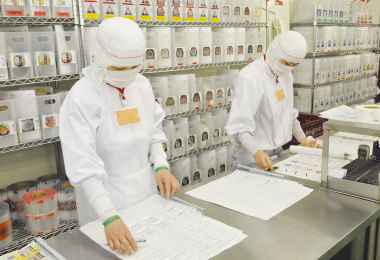Sanitation Management
Delivering safe, reliable products requires production plants to abide strictly by set rules while putting improvements in place autonomously and evolving each day.
Entry
A variety of measures are in place to prevent food poisoning and foreign matter in products when entering the workspace. Clean work clothes are put on in a specific order. Workers check themselves before a mirror to ensure no hair protrudes from their hats and that their masks are worn correctly. Before entry, any foreign matter or hairs on the work clothes are removed with an adhesive roller and an air shower.
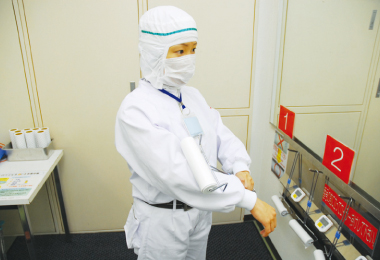
Illustrated instructions are displayed on location to ensure all workers perform these steps correctly. Use of the adhesive roller is timed using an installed timer both before and after the air shower in an established procedure.
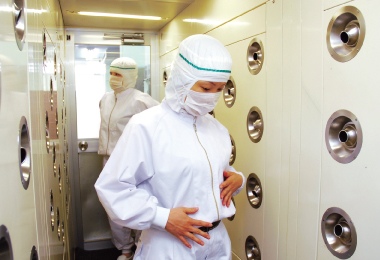
Hands are washed thoroughly before entry. A manual is displayed at the hand washing station to ensure all workers wash their hands correctly.
Workers disinfect hands using alcohol before entering the workspace.
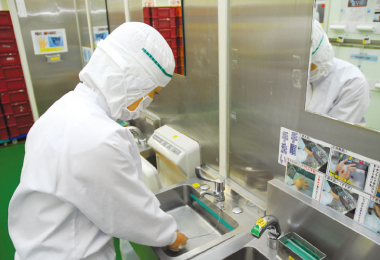
Inventory Management
All incoming raw materials undergo inspection. The item name, expiration date, storage temperature, quantity, and packaging condition are checked, and any raw materials that do not meet criteria are sent back. Raw materials that pass inspection are sorted by storage temperature (ambient, refrigerated: 5°C to 10°C, frozen: below -18°C) and stored in their respective warehouses.
Daily checks on raw materials in storage are conducted by a worker in charge to verify expiration and best-by dates.
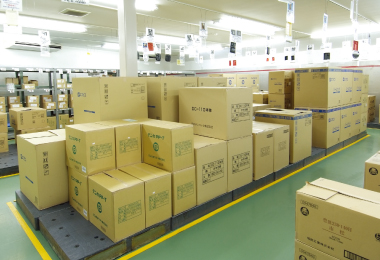
Cooking With Heat
When cooking with heat, cooking equipment operation procedures (set temperature and time) are verified. The core temperature of the ingredients is measured and recorded during heating and cooling.
(Before starting work, workers sort ingredients by first-in, first-out and check frying oil acid value. After work, they clean equipment thoroughly.)
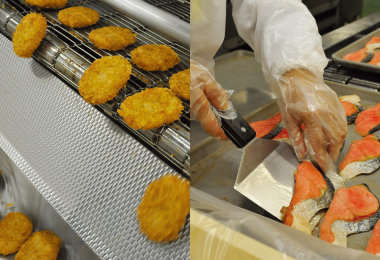
Food Preparation
Floors where ingredients for our products, including heat-processed foods, are prepared are kept clean at all times and controlled to 15°C or below in all plants.
(Floors where products are produced are controlled to 20°C or below at all times.)
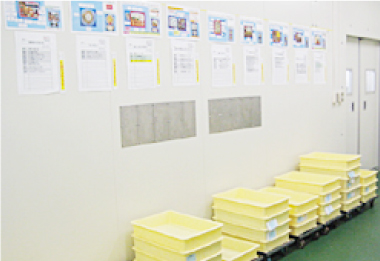
Food Arrangement
Disposable gloves are changed for each product, and workers' hands and the food arrangement conveyor are regularly disinfected with alcohol. Products that have been arranged are passed through a metal detector to prevent contamination with metal objects.
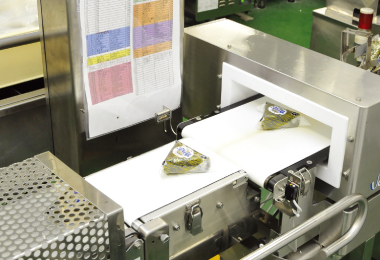
At Shinobu Foods, crucial points in sanitation control are referred to as checkpoints and are a focal point in management. There are two types of checkpoints: the Cooking (Taste) Checkpoint and the Arrangement (Inspection) Checkpoint.
Cooking (Taste) Checkpoint
The Cooking (Taste) Checkpoint verifies whether the appearance and shape of ingredients are problem-free and cut to standard based on processing instructions and specifications. All heat-cooked products are cooled immediately after heating to prevent bacterial growth, and each ingredient is checked to ensure it has cooled to the standard temperature.
Furthermore, a sample of the cooled ingredients is taken to check taste at the Cooking Checkpoint.
This is a unique initiative by Shinobu Foods for specialized workers to preemptively identify non-conforming products that cannot be identified by appearance alone.
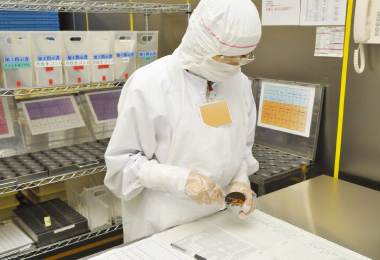
Arrangement (Inspection) Checkpoint
At the Arrangement (Inspection) Checkpoint, labels and topping instructions used in the arrangement process are centrally managed and handed over according to the process. Attached product labels are managed by quantity and undergo strict checks for each product.
At the Arrangement Checkpoint, samples are taken from finished products to verify whether they meet standards for appearance and weight, and are stored until the end of production.
